Key takeaways:
- Emotional connection in performances enhances storytelling by fostering shared human experiences between the actor and the audience.
- Techniques such as physicality, sensory memory, and the use of pauses contribute to authentic emotional expression on stage.
- Building character emotional layers requires personal reflection and collaboration with fellow actors to deepen the performance’s impact.
- Practicing emotional authenticity through honest sharing and feedback refines an actor’s ability to convey genuine emotions in their roles.
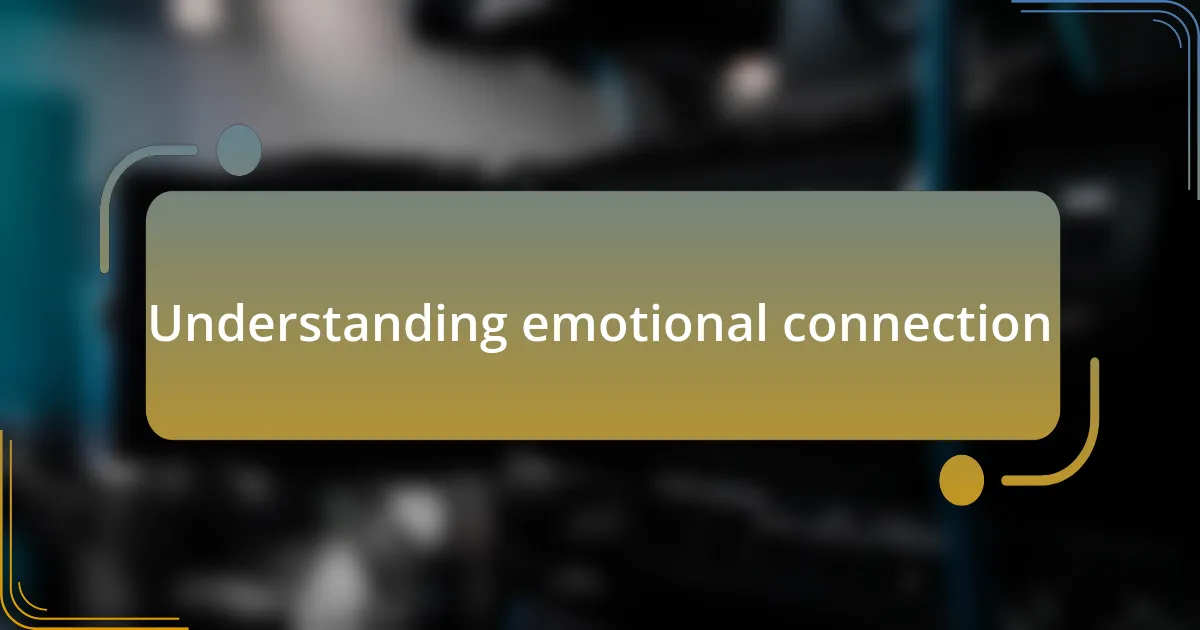
Understanding emotional connection
Emotional connection is the heartbeat of any performance. I vividly remember a scene where I had to convey deep sorrow. I closed my eyes, drew from a personal loss, and suddenly felt the weight of that grief engulf me. It’s moments like those that remind me how much emotions shape our storytelling.
How often do we watch a film and feel our hearts race or our eyes well up? That’s the magic of vulnerability. When I portray a character, I think about their struggles as if they were my own, allowing the audience to mirror those feelings. This shared humanity fosters a powerful bond, making every performance not just an act but a shared experience.
Moreover, understanding emotional connection requires us to listen—not just to the script, but to the audience’s reactions. I once performed a monologue that fell flat during rehearsal, but when I adapted it based on the team’s feedback, it transformed. Isn’t it fascinating how emotions can shift and evolve based on interaction? Each response we receive plays a crucial role in crafting a deeply resonant performance.
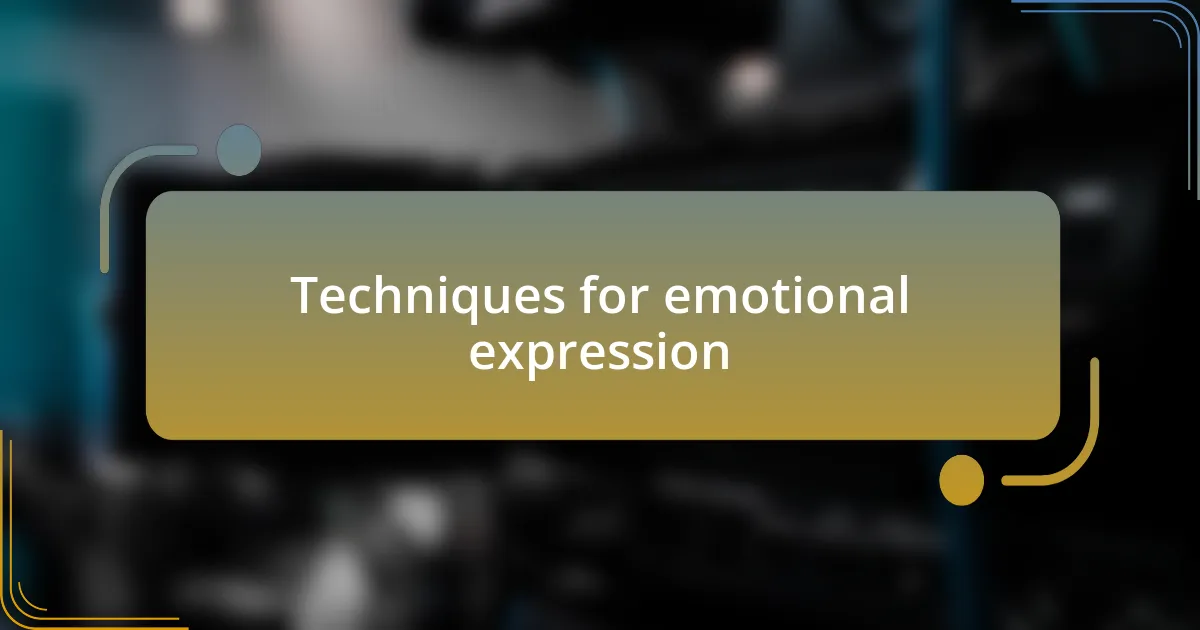
Techniques for emotional expression
When it comes to emotional expression on stage, one technique that resonates deeply with me is the use of physicality. I recall a performance where I portrayed a character caught in turmoil. By consciously altering my posture and facial expressions, I found that even subtle shifts could evoke genuine emotions, both in myself and in the audience. Have you ever noticed how body language can convey sadness or joy without uttering a word? It’s a powerful reminder of the unspoken language we share.
Another key technique involves sensory memory. I often tap into my own life experiences to heighten emotional authenticity. For instance, during a scene requiring anger, I’d transport myself back to a moment of frustration from my past. This not only makes the emotion feel more palpable but also invites the audience to experience it alongside me. Isn’t it incredible how our personal stories can inform our performances?
Lastly, don’t underestimate the power of pauses and silences. During a recent scene that called for vulnerability, I learned to embrace the space between lines. These moments of stillness allowed the underlying emotions to surface, captivating the audience’s attention. Who knew that sometimes, saying nothing could speak volumes? This interplay of silence and expression is an art in itself, shaping how emotions are delivered and received.
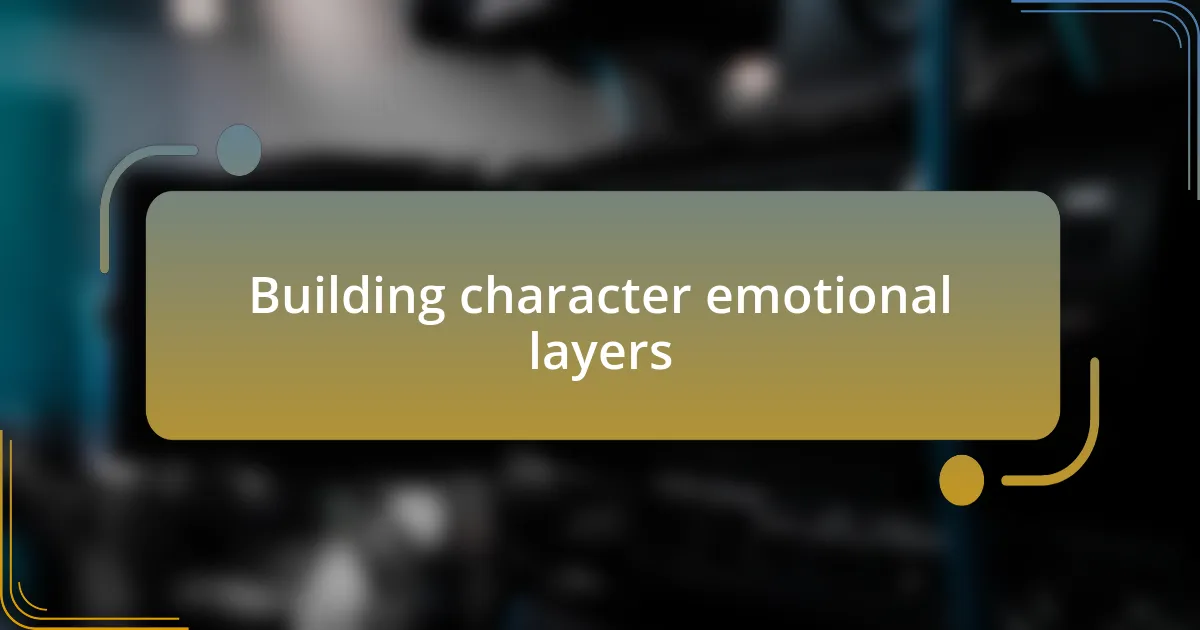
Building character emotional layers
Building character emotional layers requires a nuanced approach that goes beyond surface-level expression. I vividly remember diving into a complex role where my character wrestled with guilt. To truly embody that emotion, I layered my performance by incorporating memories of my own moments of regret. This real connection created a more textured portrayal, where each scene became a reflection of both the character’s internal struggle and my own. Have you ever noticed how a layered performance can pull you into the narrative?
In another instance, I experimented with different emotional responses to the same line in a scene, each time accessing different layers of the character’s psyche. By doing this, I discovered how one emotional truth could lead to another, revealing hidden motivations. It was fascinating to see how a single sentence could evolve when infused with varying emotional depths. Have you explored how shifting your emotional approach can transform a performance?
Additionally, I find that building emotional layers often involves collaboration with fellow actors. I recall a rehearsal where I played off a partner’s energy, allowing us to create an unspoken dialogue that enriched our characters. This dynamic exchange is vital; it encourages each actor to unpack their emotional layers while collectively driving the story forward. Isn’t it amazing how collaboration can deepen the emotional impact of a scene?
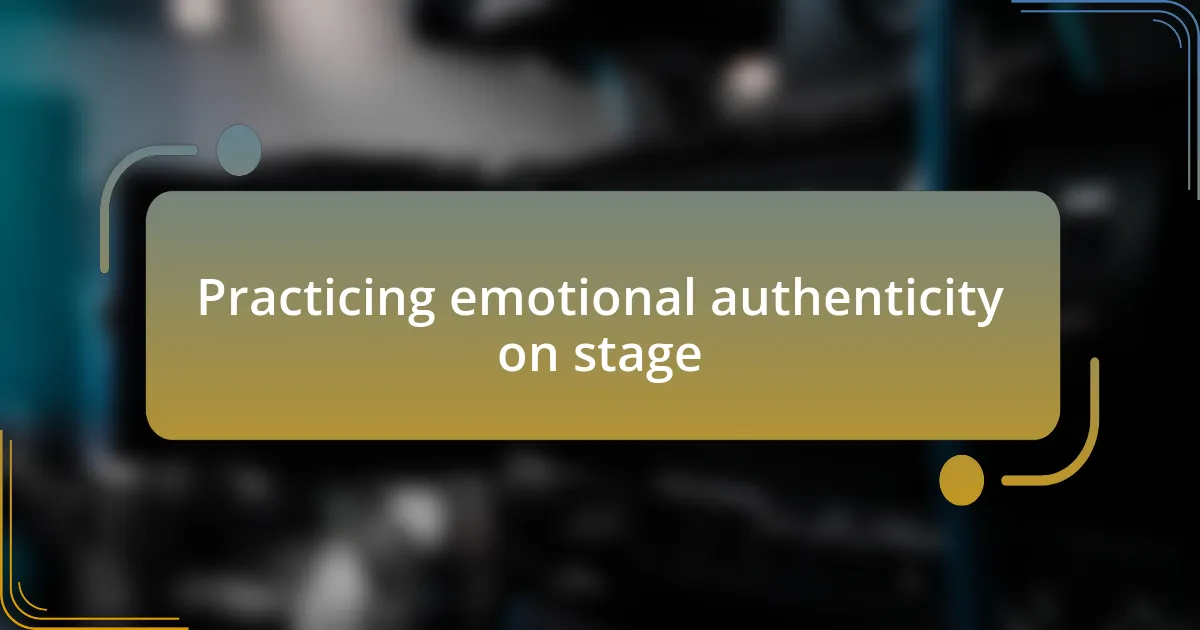
Practicing emotional authenticity on stage
Practicing emotional authenticity on stage starts with self-awareness. I remember a time when I felt completely disconnected from my character’s emotions during a rehearsal. To bridge that gap, I took a moment to reflect on my own life experiences that echoed my character’s struggles. In sharing that vulnerability, I not only connected deeply with the role but also elicited a more genuine response from my scene partner. Have you ever found that tapping into your personal experiences can unlock a new layer of authenticity?
Additionally, I’ve learned that emotional authenticity blossoms through honest practice. There was an exercise I participated in, where we had to express raw emotions without any filters. I chose to channel a recent heartbreak, allowing myself to feel and project that pain authentically. The space felt electric as others followed suit, revealing their truths. It struck me then how important it is to create a safe environment for ourselves and our peers. Have you tried creating such openness in your rehearsals to foster genuine emotional exchanges?
Lastly, I firmly believe that emotional authenticity is a skill honed through repetition and reflection. One night, after performing a particularly emotional scene, I asked for feedback from my director. Their insights revealed nuances in my delivery that I hadn’t even realized were there. This experience taught me that ongoing practice and honest reflection can refine our ability to portray emotions more authentically. What strategies do you implement to refine your emotional expression during performances?

Creating relatable stories through emotion
Creating relatable stories through emotion hinges on the ability to weave personal experiences into the narrative fabric. I recall a time while preparing for a role that demanded vulnerability, where I chose to share a story about a significant loss in my life. By channeling that pain, I felt an immediate shift in how I approached my character. Have you ever noticed how your own life story can resonate with audiences, making your performance more immersive?
Moreover, I’ve discovered that our shared human emotions are the threads that connect us all. I once witnessed a fellow actor tap into the joy of new love during a scene, and it transformed the performance. The audience wasn’t just watching; they were feeling those butterflies reminded of their own experiences. Do you think embracing those moments of clarity can elevate not just our performances, but the entire atmosphere in the venue?
Finally, the clarity that comes from emotional connections can guide storytelling in profound ways. I vividly remember a director’s insightful note about embodying my character’s fear through authentic breath and movement, which unlocked a deeper emotional layer that resonated with the audience. This taught me that every heartbeat and pause in our performance conveys a story. How often do we consciously consider these elements in bringing our characters to life and, in turn, crafting relatable narratives?
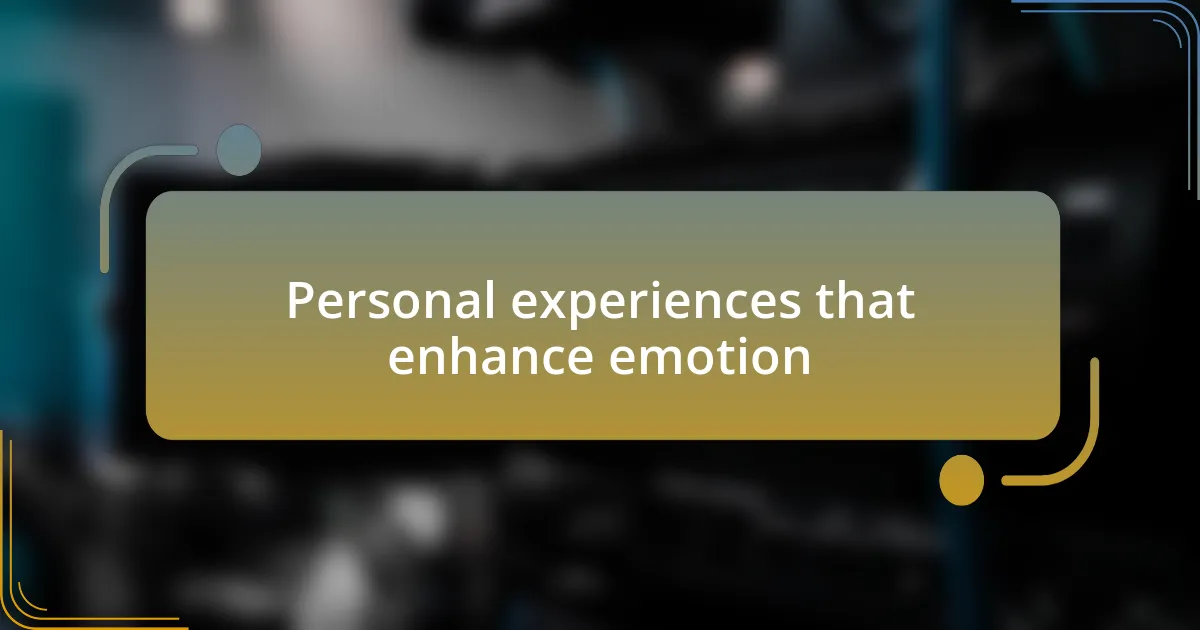
Personal experiences that enhance emotion
One experience that reshaped my approach to emotion on stage was during a rehearsal for a challenging role in a drama. I decided to draw from a moment when I experienced intense fear in a real-life situation. By revisiting that moment, I could embody my character’s anxiety more authentically. Have you ever noticed how tapping into your own fears can transform the way you portray vulnerability?
Another powerful instance happened when I shared a joyous memory with my castmates about a time I felt overwhelming pride after achieving a personal goal. The laughter and warmth that followed not only created a bond among us but also infused our performances with genuine enthusiasm. Do you ever think about how the emotions we share offstage can amplify our energy onstage?
Additionally, I recall a moment when I connected deeply with a scene that echoed my journey of self-acceptance. Each word felt heavier with significance, and I could sense that the audience was with me, feeling every nuance. It’s fascinating how our individual paths can resonate so profoundly with others, isn’t it? It’s a reminder that our personal stories are powerful tools in creating an emotional experience for both ourselves and our audience.